Running out of diapers can be a parent’s worst nightmare, especially when you’re in the middle of a diaper change and realize there’s nothing left. If you find yourself in a pinch and say, “I’m out of diapers. What can I use?” don’t panic. There are some substitutes you can use.
If you run out of diapers, you can use a cloth diaper or towel. While this may not be as convenient as disposable diapers, it can certainly do the trick. Another option is to use paper towels or tissue paper.
It’s worth mentioning that using some of these alternatives should be a temporary solution. It’s important to replace them with proper diapers as soon as possible, to avoid any potential leaks or accidents.
What to Use When You Ran Out of Diapers
1. Cloth Diapers
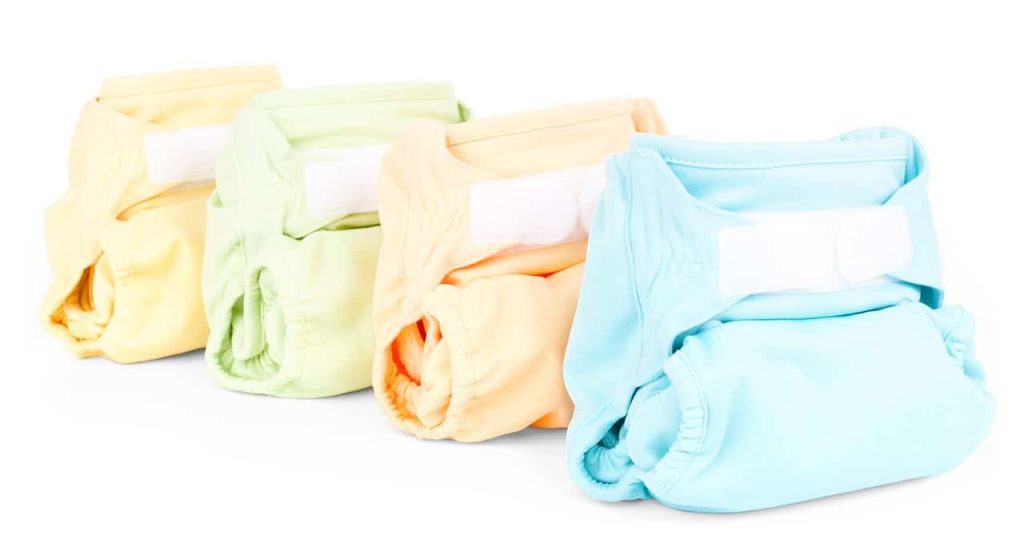
Cloth diapers can be a great alternative to disposable diapers if you’ve run out of disposable diapers or want to reduce your environmental impact. They’re reusable and made of soft, absorbent fabrics, making them an eco-friendly and cost-effective alternative to disposable diapers. In addition, they can be gentler on your baby’s skin, as they don’t contain the chemicals and synthetic materials that are often found in disposable diapers.
If you’re using new cloth diapers, be sure to wash them first to remove any residue or chemicals. You can also pre-fold the cloth diapers for easy use. Cloth diapers need a waterproof cover to prevent leaks. You can use a plastic cover or a cloth cover made of a waterproof material such as PUL.
To make cleaning up easier, you can use a liner inside the cloth diaper to catch solid waste. Try using a disposable liner or a reusable liner made of cloth. Cloth diapers don’t have the same absorbency as disposable diapers, so it’s important to change them frequently to prevent leaks and discomfort for the baby.
After use, rinse the cloth diapers and store them in a wet bag until you’re ready to wash them. You can wash cloth diapers in the washing machine using a gentle detergent and warm water. Be sure to follow the manufacturer’s instructions for washing and drying.
2. Receiving Blankets
Receiving blankets are soft, absorbent, and large enough to wrap around the child snugly. To use a receiving blanket as a diaper, simply fold the blanket into a rectangle, then place your baby in the middle with its legs slightly bent.
Pull the bottom of the blanket up between the child’s legs, making sure it’s snug but not too tight. Bring the sides of the blanket in towards the center and secure them with a knot or safety pin. If you have a larger receiving blanket, you can fold it in half first for extra absorbency.
3. Towels
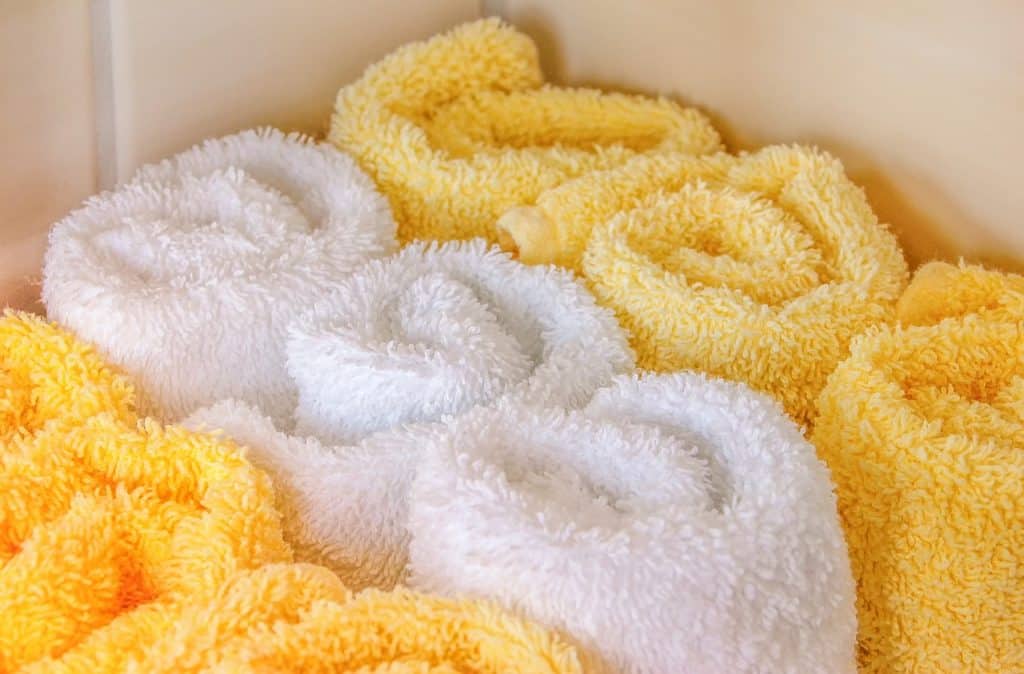
If you’re a new parent and run out of diapers, you can use towels. Using something you already have, like towels, is a quick and easy solution that can help you get through until you can restock.
Find some towels that are soft and absorbent. You’ll want to use towels that are at least the size of a typical diaper, if not larger. Lay the towel flat on a changing table or other clean surfaces. Fold the towel in half or thirds so that it’s roughly the size and shape of a diaper.
Lay the baby on top of the folded towel. If your child is a boy, you’ll want to make sure that his penis is pointing downwards so that he doesn’t pee out of the towel. Once your baby is in position, fold the sides of the towel up and around their waist, making sure that the towel is snug. You can use safety pins or even a belt to keep the towel in place if necessary.
One thing to keep in mind when using towels as an alternative to diapers is that they aren’t as absorbent as diapers, so you may need to change them more frequently. Also, towels can be rough on your child’s delicate skin, so be sure to check for any signs of irritation or rash.
Using towels as an alternative to diapers is not ideal, but it can be a lifesaver in an emergency. Just make sure to use soft, absorbent towels, and change them frequently to keep your baby clean and comfortable.
4. Handkerchiefs
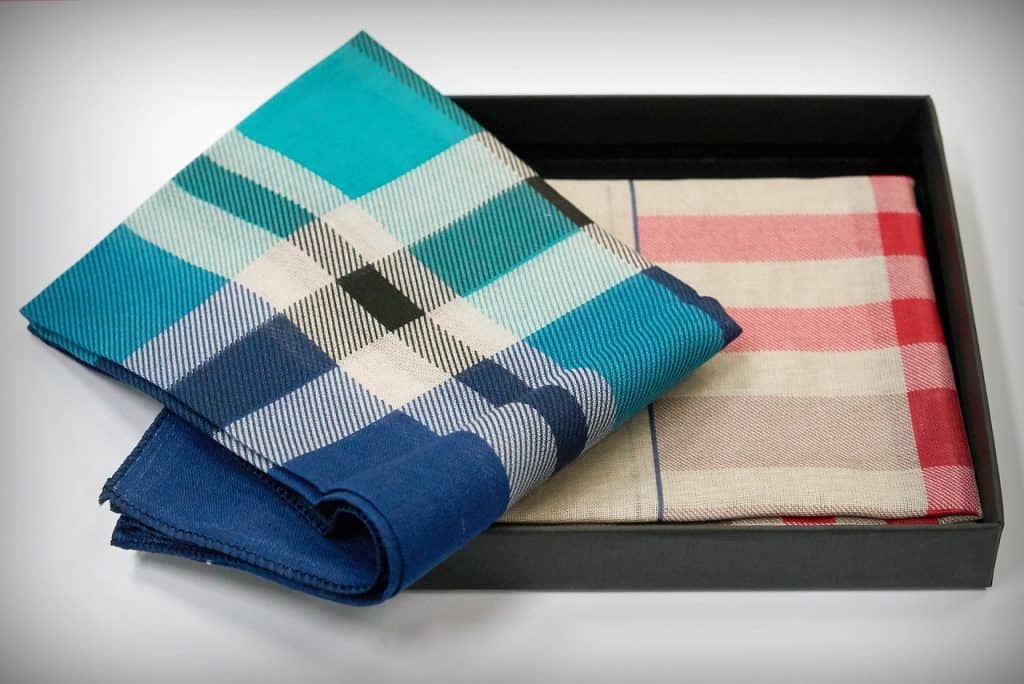
To use handkerchiefs as a makeshift diaper, you’ll need several clean ones on hand. Fold one of the handkerchiefs into a rectangle shape that’s slightly smaller than the size of the baby’s bottom. Put the folded handkerchief inside a pair of waterproof pants or a plastic cover to prevent leaks.
Position the child on the folded handkerchief and wrap the excess fabric around their waist, securing it with a safety pin. Make sure the handkerchief is not too tight, as you don’t want to cause any discomfort or restrict your baby’s movement.
If the handkerchief becomes wet or soiled, simply remove it, rinse it in cold water to remove any solids, and then soak it in a mixture of warm water and laundry detergent before washing it in the washing machine.
5. Burp Cloths
Burp cloths are typically used to clean up spit-up and drool, but they can also be a great alternative to diapers in a pinch. You can use them by folding the burp cloth in half lengthwise to create a long rectangle.
Position your baby on the burp cloth, making sure that the cloth covers their bottom and extends up their back. Next, fold the bottom of the burp cloth up between the baby’s legs and tuck it in at the waist to create a makeshift diaper. Use the sides of the burp cloth to wrap around their waist and secure the makeshift diaper in place.
You can tie the sides together in a knot or use safety pins to keep the cloth from coming loose. If your baby needs to be changed, simply untie the sides of the burp cloth and remove it. You can then use another burp cloth to create a new makeshift diaper.
6. T-Shirts
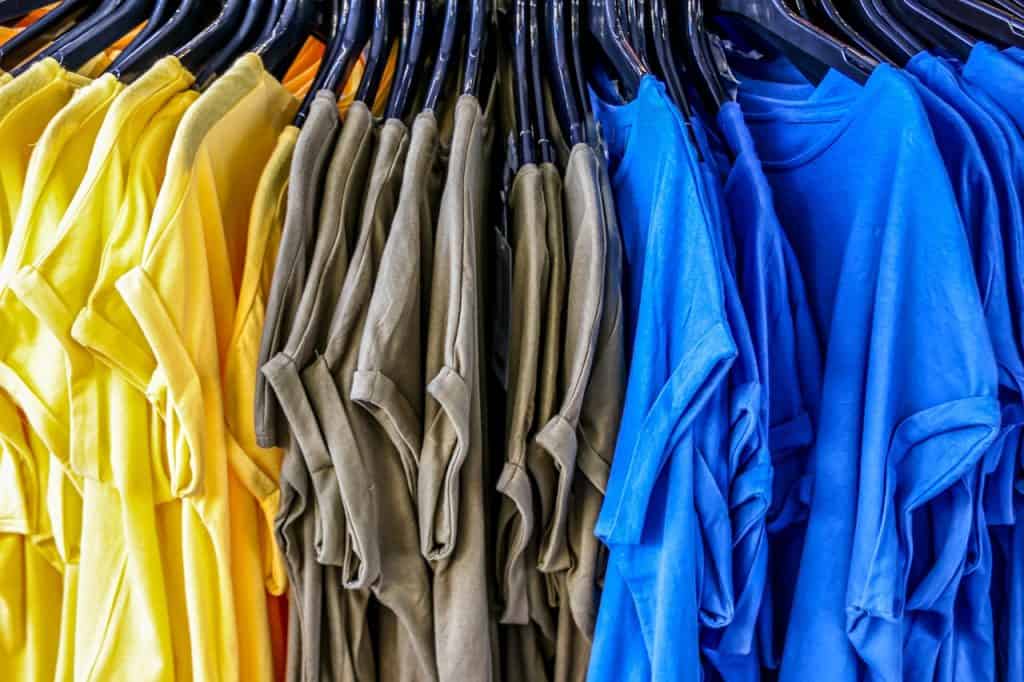
If you opt to use t-shirts as makeshift diapers, choose a soft and breathable cotton t-shirt. It should be a bit larger than the baby’s size for better coverage.
Lay the t-shirt flat and fold the sleeves towards the center of the t-shirt. Fold the bottom of the t-shirt up to create a pouch. Place the baby in the pouch and ensure that its bottom is centered in the folded-up portion of the t-shirt.
Pull the back of the t-shirt up over the baby’s bottom, and bring the front of the t-shirt up between its legs. Make sure to pull the t-shirt up snugly, to avoid discomfort or irritation.
To secure the t-shirt in place, tie the sleeves in a knot at the front of the baby’s waist. Doing so will prevent any leaks or accidents from escaping the t-shirt.
7. Adult Diapers
If you run out of diapers, you can use adult diapers for your infant or toddler. While they’re designed for different purposes, they can be a very effective alternative in a pinch.
The first thing you need to do is make sure that the adult diapers you have on hand are the right size for your child. Most adult diapers come in a range of sizes, so it shouldn’t be too difficult to find one that fits well enough to prevent leaks.
Once you have the right size, you need to figure out how to secure the diaper properly. Adult diapers usually have adhesive tabs that you can use to adjust the fit, but you may need to get creative to make sure the diaper stays in place on a smaller body. You could try using a belt or a piece of fabric to help keep the diaper snug.
8. Sanitary Napkins
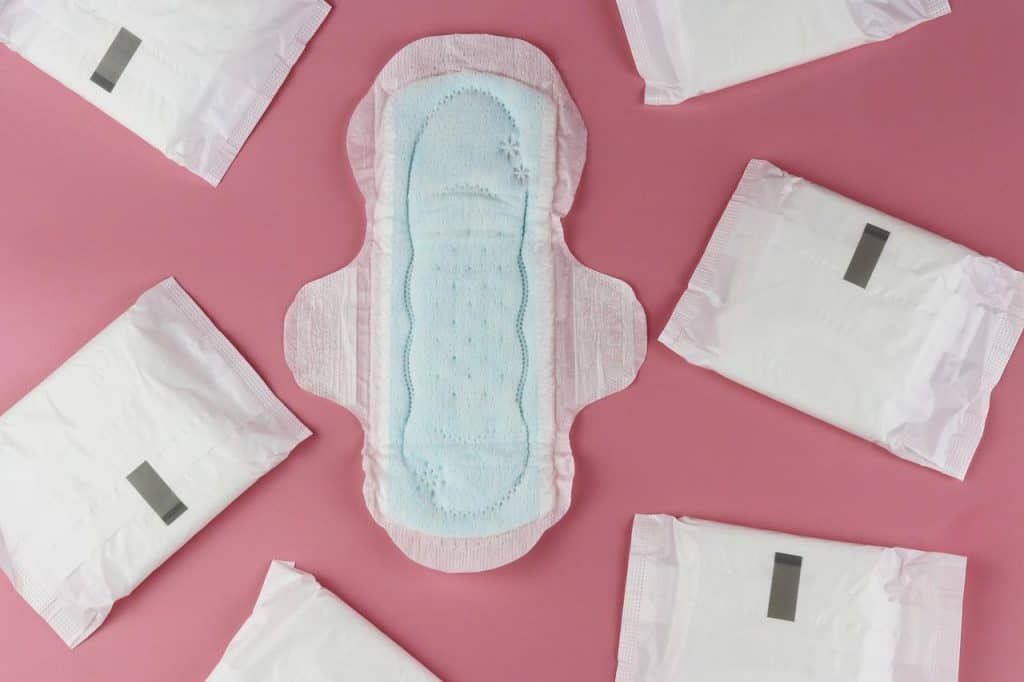
Using sanitary napkins can be a lifesaver if you’ve run out of diapers for your baby and there’s no immediate access to a store or an alternative solution. Select a pad that is of good quality and can absorb a significant amount of liquid.
Remove the adhesive backing and fold the pad in half, with the absorbent side facing inward. Doing this technique creates a pocket that can be used to contain any waste or leaks.
Put the folded pad inside your child’s diaper, making sure that it covers the entire area that would typically be covered by a diaper. Adjust the pad as necessary to ensure that it’s secure and snug against their skin.
Keep in mind that sanitary napkins are not designed specifically for babies, so you’ll need to change them more frequently than you would a diaper. Check the pad regularly for signs of saturation or leakage, and replace it as needed.
9. Undies or Trainers
The first thing to keep in mind is that undies or trainers are not designed to absorb liquid as diapers do. So, you will need to add a layer of protection to prevent any leaks. You can use a towel, a cloth diaper, or even a sanitary napkin to add some extra absorbency. Simply place the absorbent layer inside the undies or trainers and fold it over.
Once you have added the extra layer, you can then place them on your baby, making sure they fit snugly around the legs and waist. You can also use a safety pin or a clip to secure the undies or trainers in place. Be prepared to change them more often than you would with a regular diaper.
Take note that undies or trainers aren’t as breathable as diapers, so you may want to give your baby’s bottom some air time to prevent diaper rash. You can also apply diaper cream or ointment to protect their skin.
10. Paper Towels
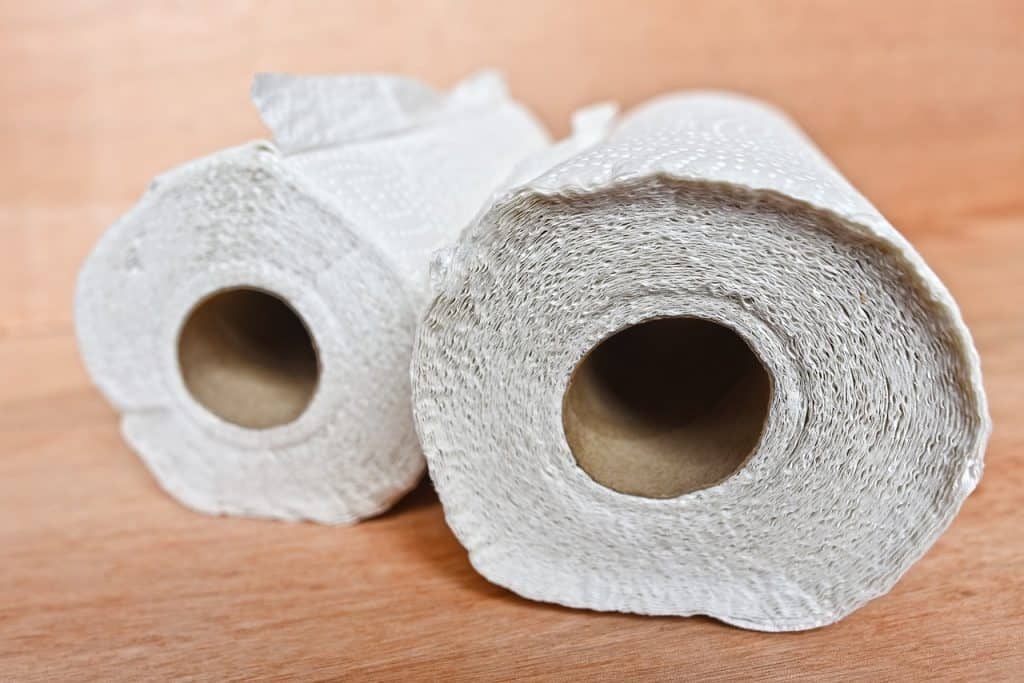
Paper towels can serve as a reliable alternative until you can restock diapers. You’ll want to gather a stack of paper towels and fold them in half, creating a long rectangular shape. Position your baby on the center of the folded paper towel, making sure the longer side is aligned with their body.
Bring the bottom half of the paper towel up toward your child’s waist, forming a pouch-like shape. Fold in the sides of the paper towel towards the center, creating a snug fit around their legs.
You can secure the makeshift diaper in place by using either tape or a rubber band. Remember that this method is best suited for shorter periods and may not hold up as well as an actual diaper, so be sure to change your baby regularly.
11. Pillow Cases
If you find yourself in a situation where you have run out of diapers for your little one, there’s an easy and practical solution that you can try: pillowcases. Lay your baby on a flat surface, such as a changing table or bed.
Grab a pillowcase and fold it in half diagonally to form a triangle. Put the folded pillowcase under the baby, with the top point of the triangle pointing towards their feet.
Hold the two corners of the pillowcase on either side of your baby and bring them up towards their tummy. Cross the corners over each other and bring them around to the back of their waist. Tie a knot to secure the corners in place.
Take the remaining point of the pillowcase (at the top of your baby’s legs) and fold it up over their tummy to create a snug fit. Tuck any excess fabric under the child to prevent leaks.
12. Dish Towels
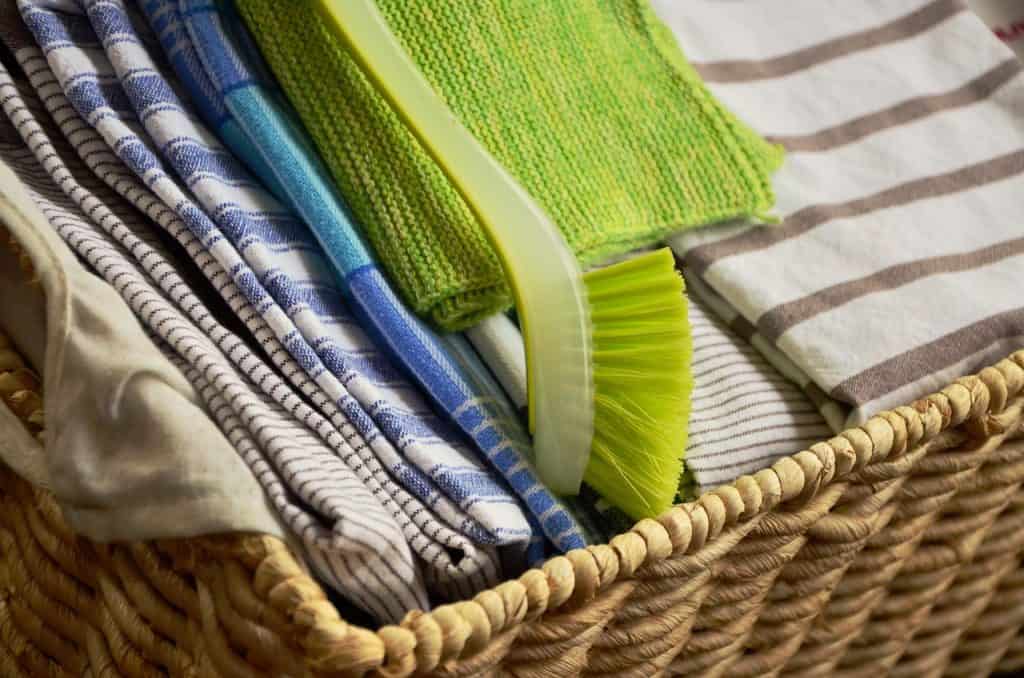
If you run out of diapers, you can use something you most likely already have, such as dish towels. However, you need to find the right type of dish towel. Look for ones that are made of soft, absorbent material like cotton. Avoid using rough or abrasive dish towels as they can irritate your baby’s delicate skin.
Once you’ve found the right dish towels, you can fold them into a rectangular shape that’s similar to a diaper. Place your infant or toddler on top of the folded dish towel and use safety pins to fasten it around their waist. To prevent leaks, you can add an extra layer of protection by placing a waterproof liner over the dish towel.
It’s important to remember that using dish towels as diapers is only a temporary solution. As soon as possible, you should restock your diaper supply to avoid any further emergencies. Also, be sure to wash and sterilize the dish towels thoroughly before using them again in the kitchen.
Final Thoughts
The alternatives listed above can be just as effective and convenient for parents while being more environmentally friendly and cost-effective in the long run. Choosing the right substitute when diapers run out depends on personal preferences and values, as every baby is unique, and what works for one family may not work for another. By exploring different options, parents can make a more informed and conscious choice for their family and the environment.